MusicRadar Verdict
Yamaha's P-45 was most definitely one of the most popular beginner pianos on the market, and it was easy to see why. It was robust, compact and offered players an authentic feeling instrument at a stellar price. The latest iteration - the P-145 - stays within the guidelines of the previous unit but manages to shrink the model to an even more compact size, making it more portable. While not all the sounds are a hit with us, we firmly believe the P-145 is perfect for budding pianists looking for a dependable instrument to kick off their musical career.
Pros
- +
Well built
- +
Great value
- +
Realistic feel
- +
Simple, intuitive design
Cons
- -
Some of the additional sounds are unimpressive
- -
Lacking in personality
MusicRadar's got your back
Yamaha P-145 review: what is it?
With their follow-up to the ubiquitous P-45, the renowned piano manufacturer continues their commitment to covering the full breadth of the price and feature spectrum. Yamaha's P series of digital pianos aims to reproduce the sound and physical response of an acoustic piano with a minimal footprint, and this approach has proved to be wildly popular with space-conscious musicians. As Yamaha's most basic model of the P series - targeted squarely at beginners - the P-145 delivers where it counts.
Yamaha's mission statement with this instrument is clear - a no-frills digital piano with only the bare minimum of features and a laser-focus on playability and affordability - and just like the preceding P-45, Yamaha has mostly succeeded, outside of a few odd design choices which we'll address later on.
The most notable difference between the P-145 and its predecessor is size. Yamaha has managed to shave off an impressive 60mm and 400g from an already compact design, leaving this model with an exceptionally efficient form factor. The new Graded Hammer Compact keybed replaces the Graded Hammer Standard found in the P-45 and is the main factor allowing for a reduction in overall size.
An AC power supply, attachable music rest, and footswitch sustain pedal are provided along with the piano itself, giving you everything you need to get started. Yamaha also offers the LP-5A pedal unit to expand the P-145's capabilities, which integrates elegantly with their accompanying L-100 keyboard stand.
Yamaha P-145 review: Performance & verdict
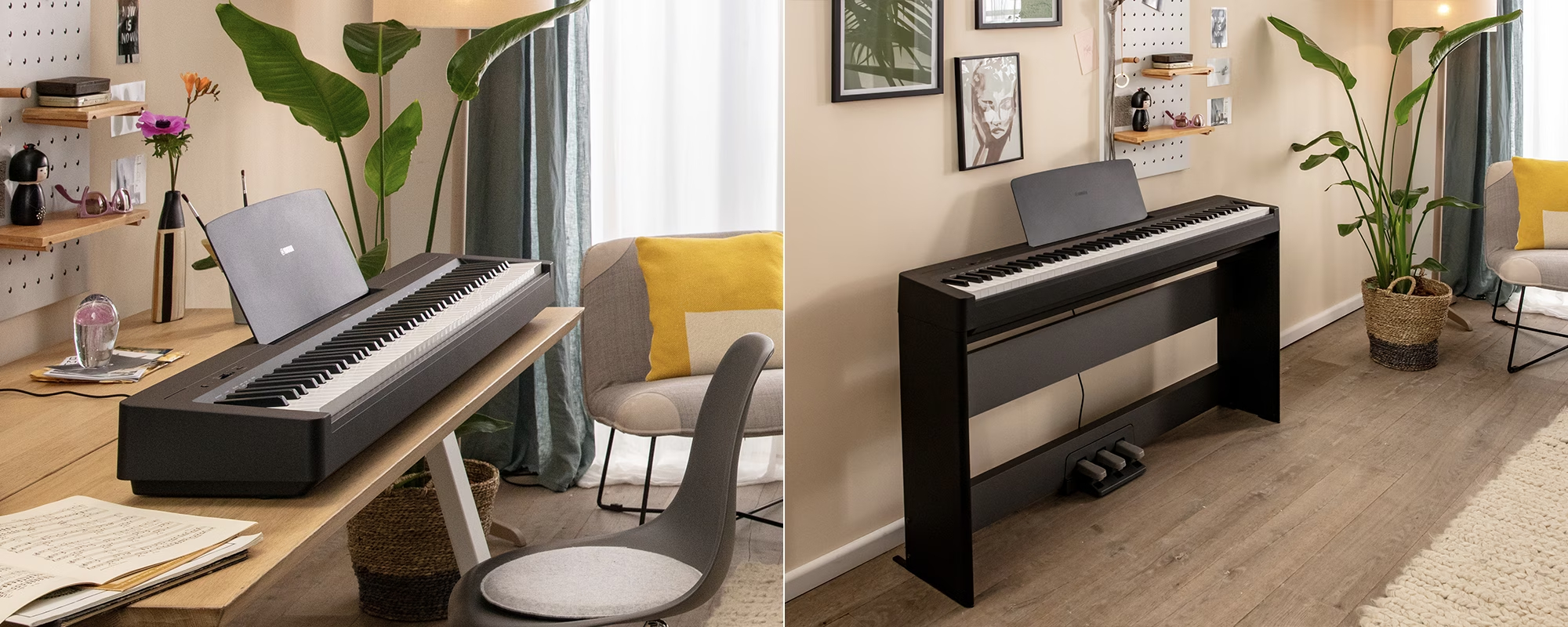
Design
Despite its sleeker form, the casing of the P-145 remains just as robust and reliable as the P-45 and is likely to survive the wear and tear of daily use for years to come. Convenience is the P-145's greatest strength, and physically there's very little to improve on here. With its light but sturdy casing, moving the instrument between rooms or homes makes owning an acoustic piano seem like a Kafka-esque nightmare by comparison.
In terms of gigging, Yamaha seems intent on presenting the P-145 as a truly "portable" instrument. While that may be comparatively true, it's still a little too heavy and unwieldy to be giving guitarists a run for their money.
That said, it's worth pointing out that the P-145 does come in lighter than its competitors, with the popular Casio S-1000 clocking in at 11.2 kg and other professional stage pianos such as the Nord Stage 4 and Yamaha CP-88 hitting the 18kg mark.
Want all the hottest music and gear news, reviews, deals, features and more, direct to your inbox? Sign up here.
Other than its slim new body, the design of the P-145 is nearly indistinguishable from its predecessor, with a clear emphasis on substance over style. We are sorry to say this is an exceptionally bland instrument on an aesthetic level.
Now, whilst this is unlikely to be an issue for those looking for a barebones digital piano, it wouldn't hurt to inject the design with a touch of personality, something which acoustic pianos offer in spades.
Playability

As we touched upon earlier, Yamaha has replaced the Graded Hammer Standard weighted keybed of the P-45 with their new Graded Hammer Compact model, and as the name might suggest, the main difference here is the size. That's no knock against the P-145, though, as the older keybed it is based on was already excellent at this price point.
For the uninitiated, "graded" refers to the nonlinear response of an acoustic piano's keyboard, with lower notes having a slightly different action to the higher register. It's a subtle difference that isn't immediately noticeable but helps add a layer of realism to the instrument.
In this regard, the P-145 is every bit as responsive and weighty as the GHS keybed of the P-45. Inside an acoustic piano, a complex chain reaction of mechanical movement is set in motion with every press of a key, and the GHC keybed of the P-145 is another admirable attempt from Yamaha at replicating that sensation.
However, one minor complaint that has carried over from the P-45 is the glossy finish of the white keys. This shiny and smooth surface can make the keys slippery during fast passages. It's an issue which can be offset by spending a lot of time with this particular keyboard, but for anyone encountering the P-145 less regularly, it can take some getting used to.
Features
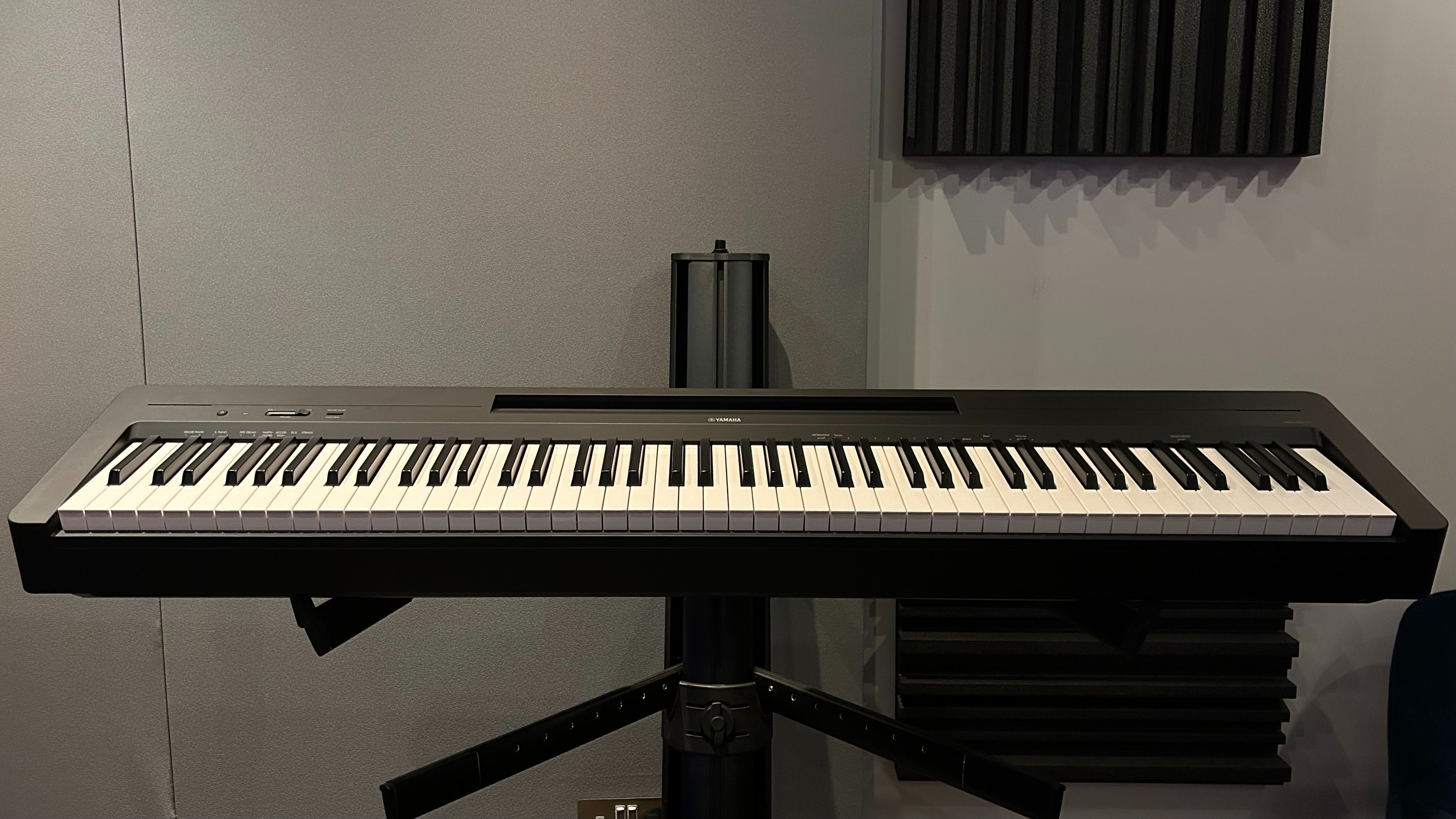
Everything we've discussed up to this point ultimately comes to nought if an instrument doesn't deliver in the sound department, and for the most part, the P-145 holds up where it counts. The onboard speakers are weighty and powerful, which is especially impressive considering the keyboard's smaller footprint.
Yamaha has included an option they call Sound Boost to get the most out of the inbuilt speakers, which after some digging through the manual, appears to be a simple gain increase coupled with some psychoacoustic trickery - and it works surprisingly well.
The piano sounds benefit especially from this feature, with maximum volume approaching that of an acoustic piano whilst also seeming to enhance the available dynamic range. We'd recommend keeping this option on for any environment where disturbance to others isn't an issue.
A 1/4" headphone output allows for silent practice. However, for an instrument so heavily geared towards beginners, a 3.5mm jack might have been a better choice to avoid anyone without studio headphones needing to purchase an adapter. That said, we do understand that Yamaha wants you to hear the piano in all its glory, and a brilliant set of digital piano headphones will come with the larger jack.
All ten sounds included with the P-145, along with an inbuilt metronome and some other global settings, can be selected using the solitary function button along with a combination of key presses. It works perfectly fine, but with such a small selection of sounds, I'm not sure why each one couldn't have had a dedicated button, as this would help add some detail to an incredibly sparse front panel design.
Along with the headphone output, which doubles as a line out for live performance, the back panel accepts a sustain pedal or the aforementioned LP-5A pedal unit, the latter of which impressively allows for half-pedalling. The LP-5A input was previously only available on the more expensive P-125, so its inclusion here offers a great value option for the budget-conscious buyer who needs a realistic set of pedals.
Sound
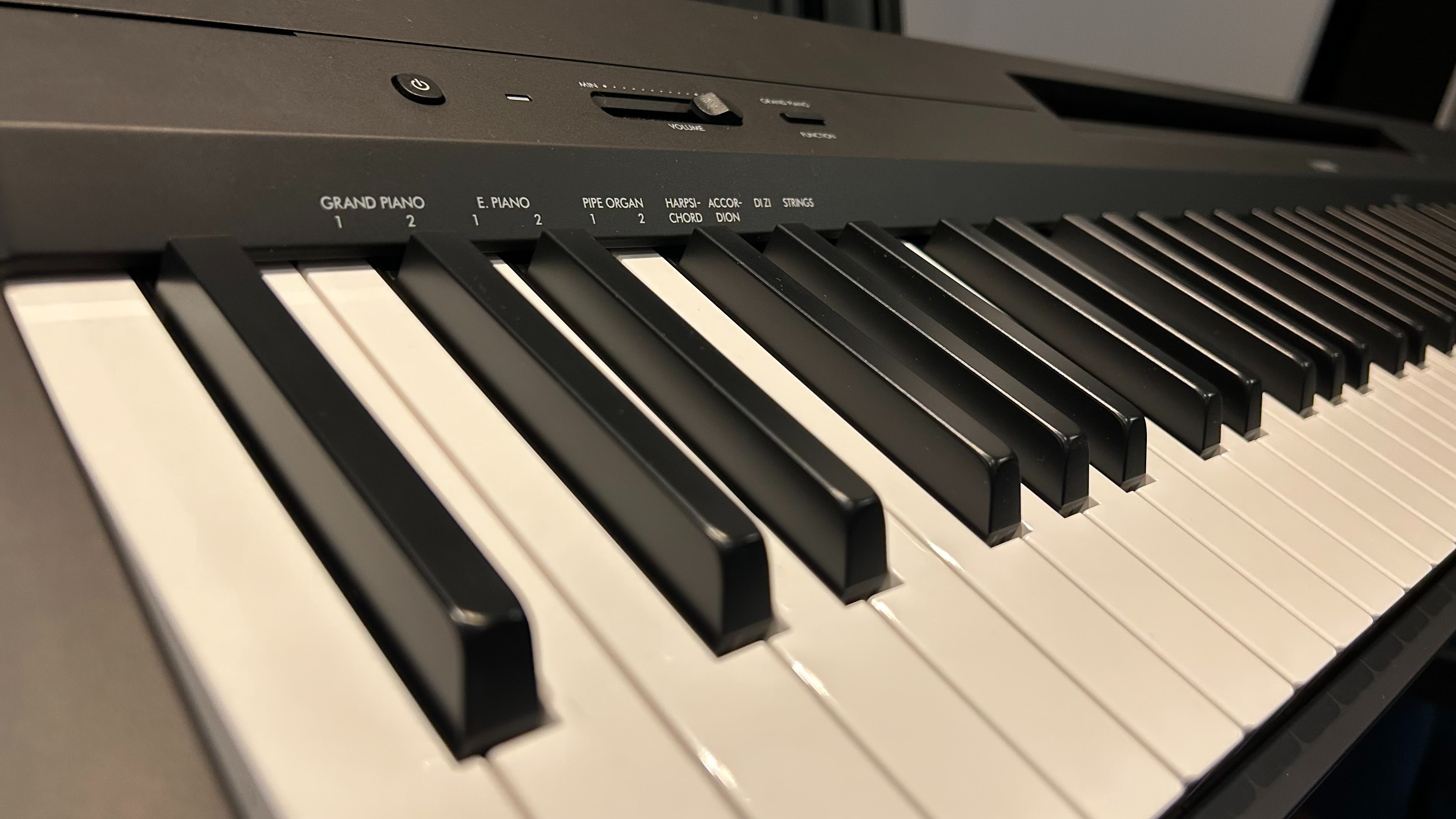
Let's now take a look at the sounds themselves. The two included grand piano models, sampled from Yamaha's full-size concert grand CFIIIS, are clear and consistent with an acceptable level of realism. The sounds don't respond particularly expressively to velocity, and players looking for a digital piano especially suited to more dramatic and nuanced material may find themselves disappointed with what's on offer here.
It's important, however, to keep things in perspective when reviewing a beginner-centric instrument at this price point. In that regard, the P-145 covers the sonic territory of the piano with enough detail to be perfectly serviceable for players at the start of their musical journey.
My only other gripe with these two pianos is that they are incredibly similar in tone and timbre, and it may have been a smarter choice to offer a full-spectrum grand alongside a softer piano more suitable for pop and folk styles.
The first electric piano, undoubtedly modelled on a Fender Rhodes, is easily the best of the remaining eight sounds and a perfectly acceptable emulation - although it is by no means a plausible replacement for the real thing. It is particularly unconvincing in the higher registers, where it begins to sound less "Rhodes" and more "ice cream van".
The other electric piano included in the P-145 is a clear 80s throwback, similar to a preset you'd find on the DX7, Yamaha's quintessential digital synthesiser, which dominated the sound of 80s pop. It's great fun to play and it may have its place in modern productions, but for us, it's so evocative of a bygone era that we couldn't find a use for it outside of pure pastiche.
Next, are the twin pipe organs, which are surprisingly characterful. The first organ has a more subdued tone, most suitable for subtler material, whilst the second has the bright and present tone of an "all stops out" organ. It's especially fun to play high figures and flourishes with these sounds, but they come with one major limitation - they don't respond to velocity and due to the absence of an expression pedal input, this means dynamics are impossible.
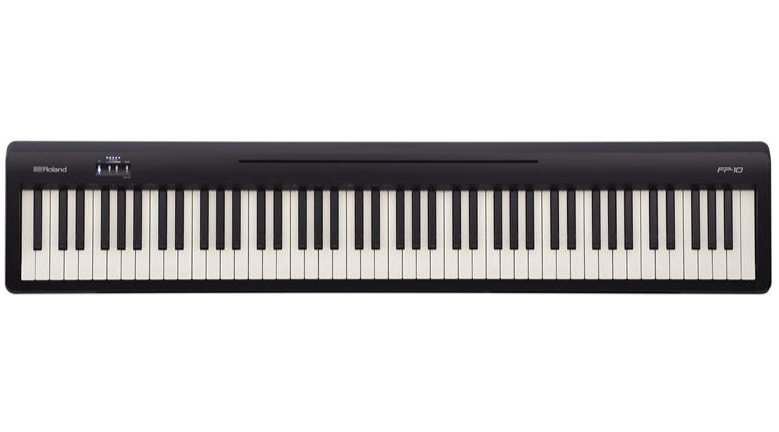
Roland FP-10: The Roland FP-10 combines a superb piano sound and an excellent weighted keybed into an affordable, no-frills instrument that truly hits the target for beginners and intermediate players.
Casio Privia PX-S1100: The Casio PX-S1100 includes smart features such as Bluetooth audio and MIDI, as well as a fantastic new speaker system that delivers stellar sound at an accessible price point.
Korg B2: The Korg B2 brings 12 well-voiced tones and a comfortable key action to anyone looking to make their piano-playing maiden voyage.
A harpsichord and accordion are the last two keyboard instruments included with the P-145's sound library. In regards to the harpsichord - it's adequate. The higher octaves are distractingly plasticky and with even the most basic material, it's not very convincing, but this is obviously not a sound anyone is buying the P-145 for. The accordion is surprisingly good with a nice tonal balance, and in an ensemble, it's likely to be an acceptable stand-in for the real thing.
The two remaining sounds packaged with the P-145 are emulations of a Chinese bamboo flute known as the Dizi and a string ensemble. Unfortunately, this is where the quality really drops off. The Dizi, in particular, is so unpleasant to listen to, we couldn't think of a single situation where it would be useful.
What's so baffling about the Dizi's inclusion is that it replaces the perfectly usable vibraphone sound found in the P-45 - an instrument which also maps to an 88-key piano keyboard far more naturally.
The string ensemble suffers a similar fate for the same reasons, and whilst it can be argued that these are sounds that most users will rarely need, it begs the question of why Yamaha bothered to include them at all. I'd have much preferred they spent that time improving the quality of the piano emulation.
Final verdict
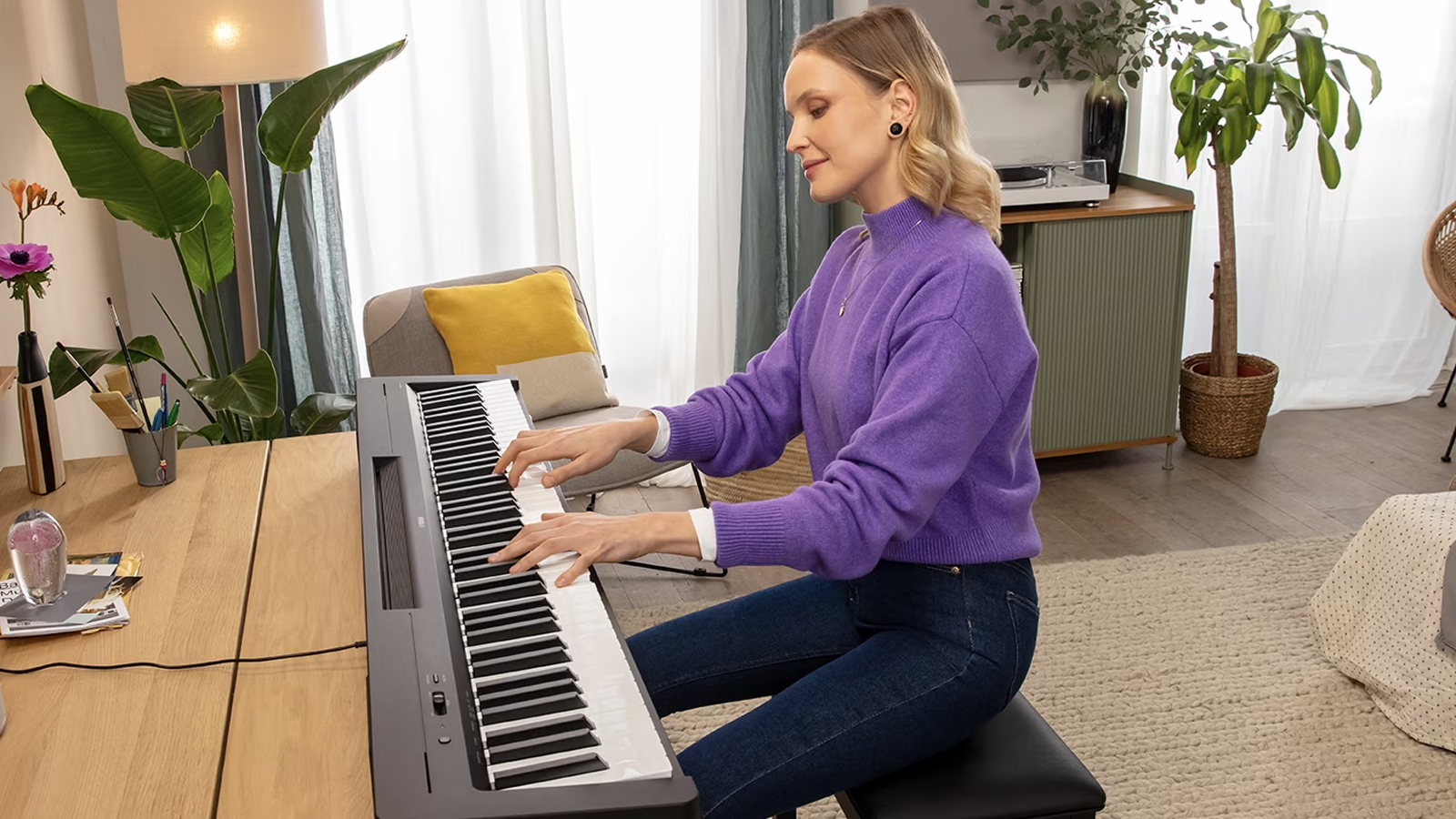
Yamaha's P-45 was most definitely one of the most popular beginner pianos on the market and one of the best Yamaha digital pianos. It was robust, compact and offered players an authentic feeling instrument at a stellar price.
The latest iteration stays within the guidelines of the previous unit but manages to shrink the model to an even more compact size, making it more portable and manageable to move around.
Now, it's safe to say that not all the sounds were a hit with us. We found the core piano tones to be more than serviceable, but beyond that, there was very little to get excited about.
If it sounds like I'm being a little harsh on the P-145, it's because it gets a lot of things right, and with a few small tweaks, Yamaha's introductory model for the P series has the potential to be the definitive beginner digital piano. As it stands, the P-145 is most definitely dependable - if a little uninspiring at times - and for most beginners, that will be enough.
Yamaha P-145 review: Hands-on demos
Gear4music Keys and Piano
Better Music
Yamaha P-145 review: Specifications
- Keys: 88 weighted, graded hammer action keys, touch-sensitive keyboard
- Polyphony: 64-note polyphony
- Sounds: 10 onboard voices including pianos, electric pianos, and strings
- Effects: 4 levels of reverb
- Features: Sound boost, Dual/Layer functions, Duo mode
- Connections: Headphone input (1/4 inch jack), Sustain pedal, USB to HOST MIDI
- Speakers: 2 x 7W Amplifiers, 2 x 12cm Speakers
- Included: Yamaha PA-150B mains power supply, FC5 sustain pedal and music rest
- Weight: 11.1kg
- Dimensions: 132.6 x 26.8 x 12.9cm
- Contact: Yamaha

When I’m not writing product reviews for MusicRadar, I’m writing music for film, television and video games. Since picking up my first guitar as a rock-obsessed 8-year-old, my life as a composer has led me across all manner of musical disciplines in search of fresh and inspiring sounds. You’re more likely to see me behind a keyboard or piano these days, but guitar and bass still hold a special place in my heart (and my studio).
I have a deep passion for art in all its forms and often find myself producing, performing and mixing for other artists. Currently suffering from an acute case of Gear Acquisition Syndrome.
